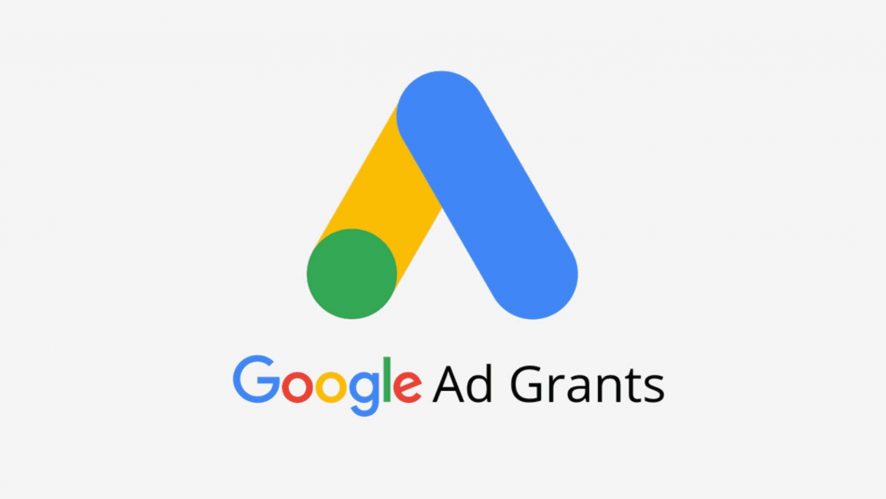If you’re still unsure about where to start, we can help.
With our free tips and guidance, you can build a better digital marketing setup. But if you don’t have the time or resources to manage it all on your own, we can support you. Get in touch to find out how.
Google Ad Grants offers non-profit organisations an opportunity to increase their online visibility and reach a wider audience. Effectively leveraging this advertising grant requires strategic planning and execution. Below are key strategies to help you maximise the benefits of Google Ad Grants.

Understanding Your Audience
Before creating ads, it is crucial to understand your target audience. Define who you are trying to reach and what actions you want them to take. Conduct thorough research to identify keywords and topics that resonate with your audience’s interests and needs. For more tips on optimising your Google Ads to reach the right audience, you can check out our article here.
Crafting Compelling Ads
To keep your Google Ad Grant, it’s important to follow the rules and guidelines. Make sure you meet the required click-through rates and keep your campaigns well-organised. This means creating clear and focused campaigns that match your organisation’s goals. It’s also important to stay updated on any changes to Google’s policies, as these can affect how you manage your ads. Regularly check your account to ensure it meets all the requirements. By doing this, you can continue to use the grant effectively and maintain your eligibility.
When describing the benefits of supporting your cause, focus on what sets your organisation apart. Explain how contributions, whether through donations, volunteer work, or other forms of support, directly contribute to achieving your mission. Use persuasive language to make a compelling case for why potential supporters should choose your organisation. Need more tips on to create the perfect ads? Read more here.
Optimising Landing Pages
Ensure that the landing pages linked to your ads are optimised for conversions. It is essential to make it easy for visitors to understand your organisation’s mission and how they can support it, whether through donations, volunteering, or other desired actions. Clearly highlight the benefits of engaging with your organisation and provide compelling reasons for visitors to take action.
Keep the design clean and user-friendly, avoiding clutter that may distract from the main message. Ensure that navigation is intuitive, allowing users to find the information they need quickly. Fast loading times are crucial for a seamless user experience, as slow-loading pages can lead to higher bounce rates. Additionally, consider incorporating visual elements, such as images or videos, to create an engaging experience. For further insights on how to create the perfect landing page, we have exactly what you need here.
Tips for Maximising Impact
To maximise the impact of Google Ad Grants, it’s essential to have a well-thought-out strategy. Focus on creating high-quality, relevant ads that align with your organisation’s goals. Regularly review and optimise your campaigns based on performance data to ensure you’re getting the most out of your ad spend. Use A/B testing to refine your approach and stay compliant with Google’s policies to maintain eligibility. Additionally, integrating your ad campaigns with other marketing efforts, such as email marketing or social media, can amplify your reach and effectiveness. Read more on how you can ‘Maximise the usage of Google Grant credits’.
Monitoring and Analysing Performance
Regularly monitor the performance of your ad campaigns and analyse key metrics such as click-through rate (CTR), conversion rate, and cost per conversion. These metrics provide valuable insights into how well your ads are performing and where adjustments may be needed. Use this data to identify areas for improvement and adjust your campaigns accordingly, such as tweaking ad copy, experimenting with different keywords, or refining targeting criteria.
Incorporate A/B testing to compare different versions of your ads and determine which elements are most effective. Test different headlines, images, or CTAs to see what resonates best with your audience. Additionally, use tools like Google Analytics to gain deeper insights into user behaviour on your website. By continually refining your approach based on performance data, you can optimise your ad campaigns for better results and more efficient use of your advertising budget. For a more detailed approach, check out our blog on ‘Unlocking the power of A/B testing in marketing within Google Grants’.
Experimenting and Testing
Experiment with different ad formats, targeting options, and messaging strategies to determine what works best for your audience. This might include trying out various ad types, such as text ads, display ads, or video ads, to see which generates the most engagement. Additionally, explore different targeting options to reach your intended audience more effectively, such as demographic targeting, geographic targeting, or interest-based targeting.
A/B testing can help you identify what resonates best with your audience and optimise your campaigns for better results over time. By creating multiple versions of your ads with slight variations in elements like headlines, images, or calls-to-action, you can compare performance and understand which combinations are most effective. Analyse the results of your tests to make informed decisions about future ad strategies, and continuously refine your approach based on these insights to achieve better outcomes.


Support Services
Explore our services to see how we can support you.
We work with clients of all sizes, ambitions, and expectations, and with budgets that start from as little as £150pm to over £1.5m each year. Explore our simple-to-understand packages that take the pressure off, so that you can focus on what you do best.
Building Quality Score
Focus on improving your Quality Score, which is a critical metric used by Google to determine the relevance and quality of your ads. A higher Quality Score can lead to lower costs per click (CPC) and better ad placement, ultimately enhancing the effectiveness of your advertising campaigns. This means that optimising your Quality Score can not only save your organisation money but also improve visibility in search results.
To improve your Quality Score, ensure that your ads and landing pages are highly relevant to your target keywords. Conduct thorough keyword research to identify terms that align with your audience’s search intent and incorporate them naturally into your ad copy. Additionally, ensure that your landing pages offer a positive user experience by being well-designed, easy to navigate, and mobile-friendly. Fast loading times and clear calls-to-action are essential to encourage user engagement. By focusing on these elements, you can effectively enhance your Quality Score and improve the overall performance of your Google Ads campaigns. We’ve discussed this topic in more detail here.
Staying Compliant
Adhere to Google Ad Grants policies and guidelines to maintain eligibility for the grant. Compliance is essential, as failure to follow these rules can result in losing access to valuable advertising resources. Avoid using overly promotional language, misleading content, or irrelevant keywords in your ads, as these can not only impact your Quality Score but also violate Google’s advertising policies.
Regularly review and update your campaigns to ensure compliance with Google’s requirements. This includes checking that your ads accurately reflect your organisation’s mission and that your landing pages align with the content of your ads. Additionally, staying informed about any policy updates or changes from Google is crucial. Make it a habit to check Google’s official resources for the latest guidelines, and promptly address any issues or violations that arise. By maintaining compliance, you can ensure a healthy advertising account and continue to leverage the benefits of Google Ad Grants effectively.
Common Pitfalls to Avoid
While Google Ad Grants can be a powerful tool, there are several ways it can go wrong if not managed properly. Poorly targeted ads, irrelevant keywords, or a lack of focus on Quality Score can lead to low click-through rates (CTR) and ineffective campaigns. Additionally, non-compliance with Google’s strict policies can result in suspension or loss of your grant. Without regular monitoring and optimisation, your campaigns may not deliver the desired impact, wasting valuable advertising resources.
Measuring Impact
Assess the impact of your Google Ad Grants campaigns beyond traditional metrics, such as click-through rates and conversion rates. It is important to look for indicators of engagement that reflect the true effectiveness of your campaigns. This can include increased website traffic, growth in email subscribers, or higher volunteer sign-ups, all of which indicate a deeper connection with your audience. Additionally, consider monitoring other engagement indicators, such as social media interactions and time spent on your website, to gain a comprehensive understanding of user behaviour. For more insights on this topic, you can refer to our blog on how to analyse your site visitor behaviour.
Understanding the overall impact of your campaigns can help demonstrate the value of the grant to your organisation and stakeholders. This not only highlights the effectiveness of your advertising efforts but also showcases how your initiatives contribute to your mission. This comprehensive evaluation can be useful for reporting purposes, helping to secure ongoing support and funding while fostering transparency and accountability within your organisation.
Staying Informed
Stay aware of any updates to Google Ad Grants policies and features, as Google frequently makes adjustments to its advertising platform. These changes can impact how your campaigns operate, so it’s essential to stay informed to maintain compliance and maximise your advertising efforts.
Regularly check Google’s official resources, such as the Ad Grants Help Centre and blog, for announcements regarding new features, policy changes, or best practices. Additionally, consider joining online forums or communities focused on Google Ad Grants, where you can exchange insights with other non-profit organisations. By keeping abreast of these updates, you can adapt your strategies accordingly, ensuring that your campaigns remain effective and aligned with the latest guidelines. Staying proactive in this regard will enable you to make the most of your campaigns and fully leverage the benefits of Google Ad Grants.
Considerations and Limitations
While Google Ad Grants offer significant advantages, there are some limitations and challenges to be aware of. The $10,000 monthly ad spend limit can restrict the scale of your campaigns, especially if you have a broad target audience. Additionally, the competitive nature of Google Ads means that non-profits often face challenges in standing out against commercial advertisers with larger budgets. It’s also important to note that managing these campaigns can be time-consuming, requiring ongoing attention to detail and expertise to truly succeed. If not properly managed, the time and effort required may outweigh the benefits.
Conclusion
Making Google Ad Grants work for your non-profit organisation requires a strategic approach, ongoing optimisation, and a commitment to learning and experimentation. By following these key strategies and staying proactive, you can leverage the power of Google Ad Grants to achieve your organisation’s mission and make a meaningful impact in your community.
We’ve been supporting Muslim charities with their digital marketing needs for almost 12 years. We’ve been managing their Google Grant for about the same time, so have more than a little understanding about how best to leverage this to make it work for them. It does take time and effort – which charities don’t always have – to get it right and stay on top of it. Get in touch to see how we can help you.

Get a free website health-check.
Find out if your website is depriving you of visitors. Request our free website health-check to identify common issues with speed, user experience, and performance. We’ll deliver this in a clear report along with some basic recommendations and quick fixes.
Learn more about health-checks
Frequently asked questions
-
Optimising your Google Ad Grant campaigns is crucial for maximising their impact. You should focus on keyword refinement, ad copy testing, and bid adjustments. For a comprehensive guide on this, check out our blog on how to optimise your Google Ad Grants.
-
To use Google Ad Grants effectively, your organisation must meet specific eligibility criteria and adhere to certain guidelines. To understand these requirements in detail, read our blog on what are the conditions for Google Grants.
-
Maximising your Google Ad Grant credits involves strategic allocation and consistent monitoring. Learn more about intelligent ways to use your credits in our blog on maximising the usage of Google Grant credits.
Start a Conversation
Request a call-back to see how we can support your digital growth.















